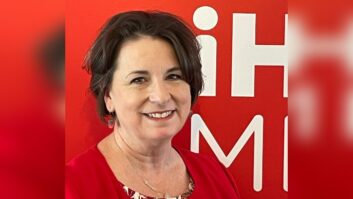Company Hopes Second Time Is Charm in Winning FCC OK for Emergency Signaling
WOBURN, Mass: One of the companies developing an Emergency Vehicle Signaling Service believes it will soon have new test data to convince critics the technology is viable.
Alert Devices International Corp. says it has redesigned its EVSS system, which uses the AM and FM bands to alert motorists of approaching emergency vehicles, so that it no longer overrides the entire spectrum with audible warnings. The system still continuously monitors stations for EAS attention signals and eliminates interference due to multiple EVSS signals, according to the company.
However the changes may not be enough to convince opponents such as the NAB and SBE, who believe EVSS is a jamming technology that will interfere with existing broadcast signals.
AdiCorp and two other companies, Safety Cast Corp. and AlertCast Communications LLC, have argued that EVSS systems would make roads safer by alerting motorists when public safety vehicles are approaching. In filings with the FCC, the companies have argued that louder audio systems and auto soundproofing advances have make it more likely drivers will not hear the siren of an approaching emergency vehicle.
‘Prepare to yield’
EVSS involves the installation of transmitters in police, ambulance and fire vehicles. The transmitter sends a warning signal intended for reception by car radios in the vicinity. A recorded message states: “Emergency vehicle approaching. Prepare to yield.” The signal is broadcast at very low power, the companies claim, typically between 15 mW and 45 mW, for reception at a range of up to 1,200 feet.
AdiCorp in 2003 petitioned the FCC to amend Parts 2 and 90 of the commission’s rules to allow emergency vehicle warnings to be transmitted on both AM and FM frequencies. It withdrew the petition in 2004 after NAB and SBE filed comments against the proposed action.
Tom Macone, president of AdiCorp’s emergency alerting division, said that the company has since redesigned its Radio Alert Transmitter. It expects to test the EVSS prototype by early 2006.
“We believe the past few years have kind of shaken things out. We have addressed the concerns of the NAB and SBE. They had given us a list of concerns and we chose to have it built right. They had legitimate concerns,” Macone said. Officials at NAB and SBE told Radio World they are willing to hear from the company about the updates.
AdiCorp’s EVSS prototype is now motion-sensitive, Macone said, which means it only transmits when a public safety vehicle is moving.
“We have incorporated GPS into the unit. The old design just threw signal out everywhere and was hardwired to the siren. Now it’s speed-sensitive so that when the vehicle is started the GPS locates itself,” Macone said. “If the vehicle is stopped with the sirens running, the unit does not transmit. Also, the faster the emergency vehicle moves, the more powerful the signal.”
EAS transmission interference also has been addressed, Macone said.
“Our unit now has a receiver built into it so it can monitor the strongest broadcast signals in an area and go dormant on any specific frequency that has an emergency alert tone going,” Macone said.
Its receiver component gives the device the capability to lock on only the strongest broadcast signals in a specific area to avoid overriding the entire AM and FM spectrum with audible warnings, Macone said.
Prototype testing planned
One issue that remains unresolved is how to reach motorists in vehicles listening to recorded audio, HD Radio or satellite radio, Macone admits.
“At this point we will not be able to reach everyone. We are strictly analog AM and FM and not compatible with HD Radio. We realize that the number of people we can reach will shrink as these new technologies become more prevalent,” Macone said. “However, we feel the analog market will represent a very large portion of in-car listening for many years to come.”
No testing of the new prototype has been scheduled, Macone said. “I’ve become a patient man throughout all of this. We want to do it as soon as possible.”
Testing is expected to take place in Canada, where similar technology has already been approved, and in a test lab in this country, said Macone. He declined to provide more specific details.
AdiCorp’s Radio Alert Transmitter is expected to sell for approximately $1,000 if the company can gain FCC approval, Macone said. The company has spent nearly $250,000 perfecting the technology.
Attempts to reach Safety Cast Corp. officials for this story were unsuccessful. The company’s phone number at its offices in Jacksonville, Fla., has been disconnected and the company’s Web site was down, leading to speculation by several sources that the company has ceased operations.
Another firm, AlertCast Communications LLC, has slowed its development of EVSS based on conversations with the broadcast industry, according to Vice President Howard Closson.
“The biggest source of frustration has been the NAB and their unwillingness to join us to partner on this technology. We are talking minimal interference at a very short-range distance,” Closson said. “This is a public safety issue that deserves our attention.”
In two recent years, 1999 and 2003, more police officers were killed on duty in auto accidents than by gunfire, according to the National Law Enforcement Officers Memorial Fund, which tracks fatalities. The trend is increasing but there is no single reason for the rise, according to the group, although a spokesman for the fund told the Associated Press driver distraction is partly to blame.
Closson said recent leadership changes at the FCC could aid his company’s efforts to at least test the technology. “We just haven’t been able to get past the FCC’s regulations,” he said.
AdiCorp’s two biggest detractors say they are willing to discuss the redesigned system.
NAB spokesman Dennis Wharton said, “NAB staffers are willing to meet again to consider any new information that (AdiCorp) might have.”
An SBE spokesman said the group would like to review the redesigned system if allowed to do so. “SBE looks forward to being contacted regarding the new design to see if it adequately addresses the many flaws in the original system proposed by ADiCorp,” the spokesman said.
AdiCorp officials said they appreciate the time the NAB has spent on the issue. “I believe they will see the value in this and what it can mean to public safety in this country,” Macone said.
The company will resubmit its Petition for Rulemaking with the FCC seeking approval for its Radio Alert Transmitter once testing is complete, Macone said. “We left the FCC with the promise that we would come back,” he said.












